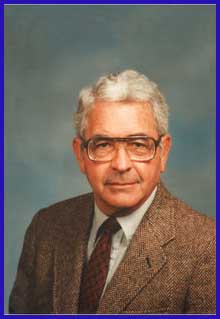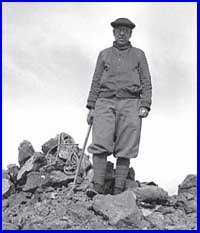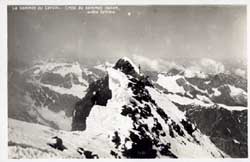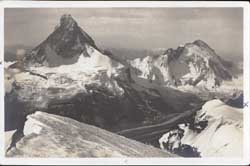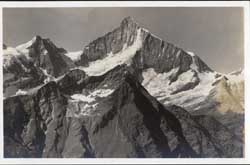The first General Assembly of the National Presbyterian Church, as it was initially named, took place in Birmingham, Alabama, December 4-7, 1973. On their third day of business, the Assembly adopted the Book of Church Order as part of its constitution, adopted by-laws of incorporation, and set up a committee to deliberate on charismatic gifts. In their evening service of worship that day, the Rev. Don Patterson brought a message entitled At the Crossroads. Then, concluding the day’s business, the Assembly adopted a number of recommendations which established the denomination’s board of foreign missions, and finally, adopted a public declaration, to be issued on the final day of the Assembly. This public statement, “A Message to All Churches of Jesus Christ throughout the World, from the General Assembly of the National Presbyterian Church,” was a declaration of the character and intent of the new denomination:
A MESSAGE TO ALL CHURCHES OF JESUS CHRIST THROUGHOUT THE WORLD, FROM THE GENERAL ASSEMBLY OF THE NATIONAL PRESBYTERIAN CHURCH
Greeting: Grace, Mercy and Peace be multiplied upon you!
As the National Presbyterian Church takes her place among the family of Churches of the Lord Jesus Christ, we take this opportunity to address all Churches by way of a testimony.We gather as a true branch of the Church of our Lord Jesus Christ. We affirm our allegiance to Him as the sole Head of the Church and the sole Law-giver in Zion. We remember that “the gates of hell shall not prevail” against His Church.
The constituency of this new denomination for the most part have separated themselves from the Presbyterian Church in the United States. The decision to separate has come only after long years of struggle and heartache on the part of many of us to return the Church to purity of faith and practice. Principle and conviction entered into that decision, reached only after much soul searching and earnest prayer. We have reluctantly accepted the necessity of separation, deeming loyalty to Christ to take precedence over relationship to any earthly institution, even to a visible branch of the Church of Christ.
In much prayer and with great sorrow and mourning we have concluded that to practice the principle of purity in the Church visible, we must pay the price of separation. We desire to elaborate upon those principles and convictions that have brought us to that decision.
We are convinced that our former denomination as a whole, and in its leadership, no longer holds those views regarding the nature and mission of the Church, which we accept as both true and essential. When we judged that there was no human remedy for this situation, and in the absence of evidence that God would intervene, we were compelled to raise a new banner bearing the historic, Scriptural faith of our forefathers.
First, we declare the basis of the authority for the Church. According to the Christian faith, the Bible is the Word of God written and carries the authority of its divine Author. We believe the Bible itself asserts that it has been given by inspiration, or, more literally, has been “God-breathed” (II Timothy 3:16). “No prophecy ever came by the will of man; but men spake from God, being moved by the Holy Spirit” (II Peter 1:21). We declare, therefore, that the Bible is the very Word of God, so inspired in the whole and in all its parts, as in the original autographs, to be the inerrant Word of God. It is, therefore, the only infallible and all-sufficient rule of faith and practice.
This was the position of the founding fathers of the Presbyterian Church in the United States. We affirm with them in their “Address to All Churches” the application of this principle to the Church and her mission:
Let it be distinctly borne in mind that the only rule of judgment is the written Word of God. The Church knows nothing of the intuitions of reason or the deductions of philosophy, except those reproduced in the Sacred Canon. She has a positive constitution in the Holy Scriptures, and has no right to utter a single syllable upon any subject except as the Lord puts words in her mouth. She is founded, in other words, upon express revelation.Her creed is an authoritative testimony of God, and not speculation, and what she proclaims she must proclaim with the infallible certitude of faith, and not with the hesitating assent of an opinion.
When a denomination will not exercise discipline and its courts have become heterodox or disposed to tolerate error, the minority finds itself in the anomalous position of being submissive to a tolerant and erring majority. In order to proclaim the truth and to practice the discipline which they believe obedience to Christ requires, it then becomes necessary for them to separate. This is the exercise of discipline in reverse. It is how we view our separation.
Some of our brethren have felt that the present circumstances do not yet call for such a remedy. They remain in the Presbyterian Church in the United States. We trust they will continue to contend for the faith, though our departure makes their position more difficult. We express to them our hope that God will bless their efforts, and that there may come a genuine spiritual awakening in the Presbyterian Church in the United States.
We trust that our departure may cause those who control and direct the programs and policies of the Presbyterian Church in the United States to reexamine their own position in the light of the Word. Our prayer is that God may use this movement to promote spiritual awakening, not only in the new Church, but also in that from which we have separated. If in the providence of God, such were to occur, we would gladly acknowledge that the grounds for separation and division would have to be reassessed.
We declare also that we believe the system of doctrine found in God’s Word to be the system known as the Reformed Faith. We are committed without reservation to the Reformed Faith as set forth in the Westminster Confession and Catechisms. It is our conviction that the Reformed faith is not sectarian, but an authentic and valid expression of Biblical Christianity. We believe it is our duty to seek fellowship and unity with all who profess this faith. We particularly wish to labor with other Christians committed to this theology
We further renew and reaffirm our understanding of the nature and mission of the Church. We have declared that Christ is King and only Law-giver in Zion. He has established the Church. His Church is a spiritual reality. As such it is made up of all the elect from all ages. This spiritual entity is manifested visibly upon the earth.
The Church visible is found wherever there are those who profess the true faith together with their children. As an assembly of those who do so profess this faith, we have established this denomination in the belief that it is a true branch of the Christian Church.
We believe the Church in its visible aspect is still essentially a spiritual organism. As such, its authority, motivation and power come from Christ, the Head, who is seated at the right hand of God. He has given us His rulebook for the Church, namely, the Word of God written. We understand the task of the Church to be primarily declarative and ministerial, not legislative or magisterial. It is our duty to set forth what He has given us in His Word and not to devise our own message or legislate our own laws.
We declare that the ultimate purpose of the Church is to glorify God. We believe this includes giving top priority to Christ’s Great Commission. We reaffirm the substance of the position taken by the founding fathers of our former Church regarding the mission of the Church:
“We desire distinctly and deliberately to inscribe on our Church’s banner, as she now unfurls it to the world, in immediate subservience to the authority of our Lord as Head and King of the Church His last command: “Go ye therefore, and make disciples of all nations, baptizing them into the name of the Father, and of the Son, and of the Holy Spirit: teaching them to observe all things whatsoever I commanded you, and lo, I am with you always, even unto the end of the world.”
We regard this as the great end of our organization, and obedience to it, as the indispensable condition of our Lord’s promised presence. It is the one great comprehensive objective, a proper conception of whose grandeur and magnitude is the only thing which, under the constraining love of Christ, can ever sufficiently arouse our energies and develop our resources so as to cause us to carry on with that vigor and efficiency, which true loyalty to our Lord demands, those other agencies necessary to our internal growth and prosperity at home.”
As a Church, we consciously seek to return to the historic Presbyterian view of Church government. We reaffirm in the words of that earlier “Address to All Churches” the following:
“The only thing that will be at all peculiar to us is the manner in which we shall attempt to discharge our duty. In almost every department of labor, except the pastoral care of congregations, it has been usual for the Church to resort to societies more or less closely connected with itself, and yet logically and really distinct. It is our purpose to rely upon the regular organs of our government, and executive agencies directly and immediately responsible to them. We wish to make the Church, not merely a superintendent, but an agent. We wish to develop the idea that the congregation of believers, as visibly organized is the very society or corporation which is divinely called to do the work of the Lord. We shall, therefore, endeavor to do what has never been adequately done— bring out the energies of our Presbyterian system of government. From the session to the Assembly, we shall strive to enlist all our courts, as courts, in every department of Christian effort. We are not ashamed to confess that we are intensely Presbyterian. We embrace all other denominations in the arms of Christian fellowship and love, but our own scheme of government we humbly believe to be according to the pattern shown in the Mount, and, by God’s grace, we propose to put its efficiency to the test.”
We greet all believers in an affirmation of the bonds of Christian brotherhood. We invite into ecclesiastical fellowship all who maintain our principles of faith and order.We now commend ourselves to God and the Word of His power. We devoutly pray that the Church catholic may be filled afresh with the Holy Spirit, and that she may speedily be stirred up to take no rest until the Lord accomplishes His Kingdom, making Zion a praise in the whole earth.
December 7, 1973
[Note: Again, this document was adopted on December 6th, but publicly issued on December 7th.]
Words to Live By:

